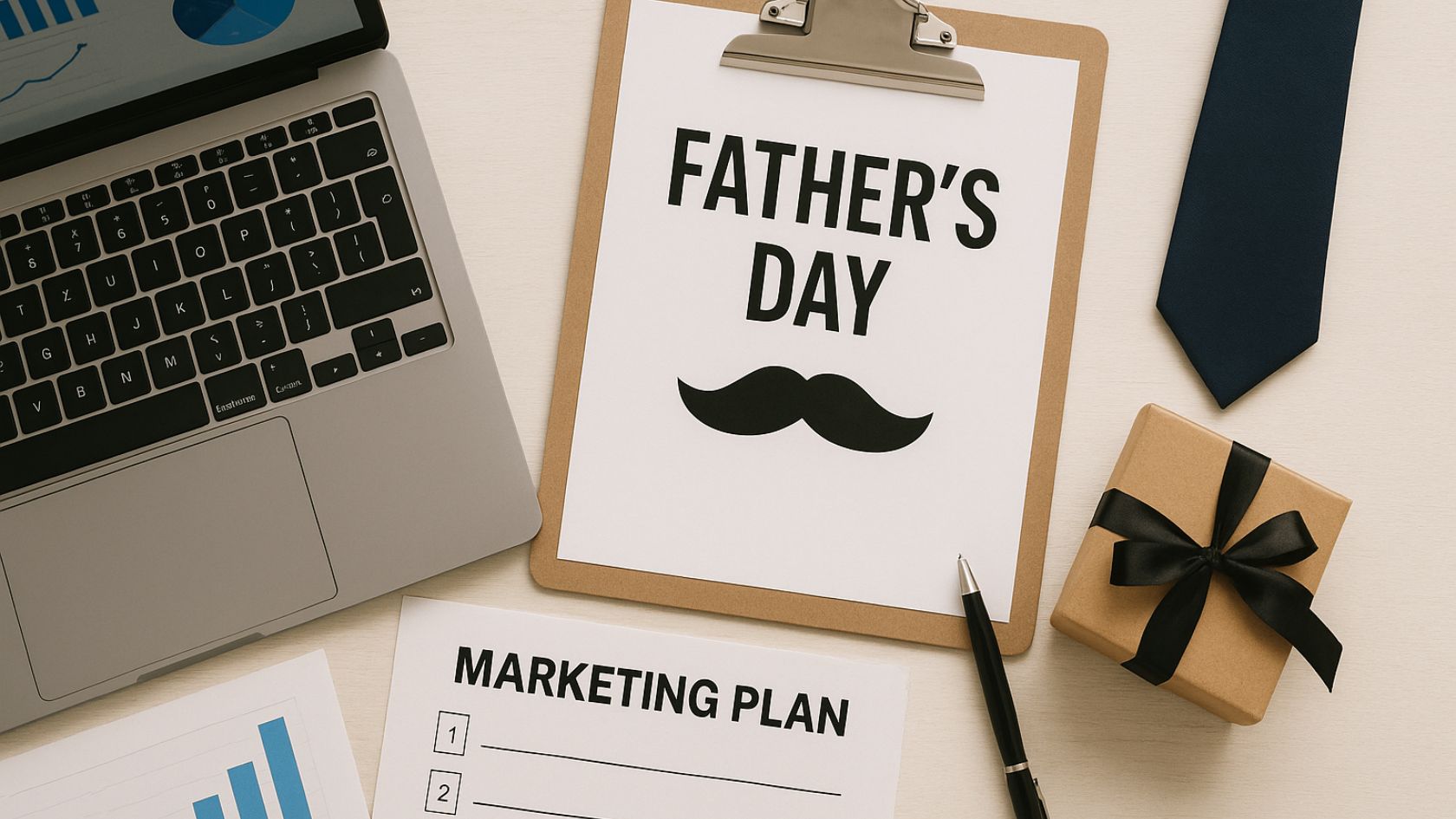
Father’s Day Marketing Campaigns: A Step-by-Step Guide to Drive Sales

Father’s Day marketing campaigns succeed when they pair authentic appreciation for dads with timely offers, clear messaging, and smart channel execution. Whether you’re a local store, an e‑commerce brand, or a B2B company with gifts for clients and teams, this guide will help you plan, build, and launch a campaign that actually moves the needle.
Before you design creative or write copy, align your campaign goal: is it new customer acquisition, higher average order value, or retention and referrals? That goal will shape your offers, audience targeting, and measurement plan. If your content will rely on social creative, start a lightweight asset library so you can quickly test formats like carousels, reels, and stories; ready‑to‑use Father’s Day social media posts
can dramatically speed up production while keeping your feed on brand.
Know Your Audience (and Their Buying Motives)
Most Father’s Day purchases are made by partners, children, and family friends—not dads themselves. Segment your audiences into at least three buckets: gift purchasers (spouses and kids), self‑buyers (dads treating themselves), and corporate buyers (teams buying for employees or clients). Map motivations for each: emotional gratitude, practicality, novelty, or premium status. Then reflect those motivations in creative, product selection, and bundles.
For local businesses, winning intent‑driven search traffic is critical in the two weeks leading up to the holiday. Tighten up your listings, ensure your Google Business Profile is accurate, and build a page targeting queries like “best Father’s Day gifts in [city]” with schema markup. If you want a robust playbook, these
advanced local SEO strategies
will help you dominate nearby searches when buyers are ready to act.
Craft an Offer That Earns the Click
An offer is more than a discount. For Father’s Day, consider: curated bundles (e.g., “Grill Master Kit”), limited‑edition packaging, personalization (monograms, engraved notes), gift‑with‑purchase, or a “buy for dad, save for you later” bounce‑back coupon. Anchor the value with social proof (“10,000+ gift‑givers chose this last year”), urgency (countdown timers and inventory notices), and a clear last‑ship‑by date. If shipping is a constraint, promote e‑gift cards and printable certificates in the final 72 hours.
Pick the Right Channels and Make Them Work Together
Email: build a four‑email arc—(1) Save the date + gift guide, (2) Best‑sellers by persona, (3) Last‑ship‑by reminder, (4) Last‑minute e‑gift options. Use dynamic blocks to swap products by audience segment, and add predictive send‑time to maximize open rates. Keep subject lines tight: “Gifts Dad Actually Wants” outperforms generic “Father’s Day Sale.”
Paid social and short‑form video: lean into “show, don’t tell.” Feature unboxing, quick demos, or a 15‑second “3 reasons Dad will love this.” Retarget viewed product pages with bundle upgrades. For prospecting, try interest stacks like grilling, DIY, cycling, tech gadgets, and outdoor gear. Rotate hooks: sentimental (“Thank the man who taught you…”), practical (“Fewer trips to the hardware store”), and experiential (“Make memories at the campsite”).
Website and landing pages: create a dedicated Father’s Day hub with filters by price, persona (Techie Dad, Outdoorsy Dad), and delivery timeline. Add a gift‑finder quiz and a first‑time buyer incentive. Place shipping cutoffs in the hero and cart. Use badges like “Dad‑Approved” and include star ratings near CTAs to reduce friction.
Creative and Copy That Feel Genuine
Authenticity beats clichés. Swap stock imagery for real customers or employees with their dads. Avoid stereotypes—acknowledge diverse father figures: stepdads, grandfathers, mentors, and single moms doing double duty. Keep color palettes warm and grounded (navy, forest, charcoal) and use a balanced mix of heartfelt and helpful copy. Headlines to test: “For the dad who fixes everything—give him something he’ll actually use,” “Make his morning ritual unforgettable,” and “Memories, not clutter.”
Step‑by‑Step Timeline You Can Copy
- 4–6 weeks out: finalize the offer, source inventory, and brief creative. Build your gift guide landing page and ensure it’s indexed.
- 3–4 weeks out: launch awareness ads and publish two to three helpful blog posts (e.g., “Best gifts under $50”). Pitch affiliates with unique codes.
- 2 weeks out: start your email arc, turn on search campaigns for branded + gift keywords, and publish UGC on social.
- 7–10 days out: escalate retargeting (viewed product → bundle), add countdown timers, and pin a shipping‑cutoff announcement bar.
- 72 hours out: shift creative to e‑gift cards, curbside pickup, or printable certificates. Emphasize “instant” in copy.
- Post‑holiday: run a thank‑you campaign, request reviews, and offer a bounce‑back coupon to drive repeat purchases.
Measure What Matters (and Learn for Next Year)
Define success metrics up front: revenue, AOV, conversion rate, new‑customer share, CAC/ROAS, and email‑driven revenue. Set up UTM parameters by channel and campaign. In GA4, build an exploration comparing pre‑campaign and campaign windows for gift‑guide page performance, and segment by device to spot mobile friction. Tag key events: quiz completion, add‑to‑cart, checkout start, and purchase with coupon code. Use these insights to inform next year’s forecasting and inventory.
Inspiring Examples and Angles to Test
Physical goods: a coffee brand bundles beans + mug + grinder at a 15% bundle discount; copy focuses on “his quiet morning.” Outdoor brand offers a limited‑edition colorway with engraved initials and free rush shipping. Service businesses: barber shops sell “3 cuts for Dad” punch cards; car washes bundle a detail + ceramic coating at a Father’s Day price. Digital products: a password manager advertises “protect what matters” with a family plan.
Angles to test: teach‑able moments (“What Dad taught you”), pay‑it‑forward (“Donate 5% to mentorship”), and experience‑first (“Plan a day together: our checklist inside”).
Common Mistakes to Avoid
- Waiting too long: last‑minute pushes drive lower AOV and strain support.
- One‑size‑fits‑all creative: segment by persona and budget tiers.
- Weak product‑page UX: missing shipping cutoffs, skimpy descriptions, or buried reviews hurt conversions.
- Ignoring mobile: ensure tap targets, image compression, and above‑the‑fold CTAs are dialed.
- Only discounting: value can be bundles, personalization, or memorable experiences.
Conclusion
When done right, Father’s Day marketing campaigns blend heart and helpfulness: a clear offer, authentic creative, and a synchronized channel plan. Start with the buyer’s motive, make the choice easy, and remove last‑mile friction with transparent shipping and instant options. As you scale, study winning ad angles in your niche and keep a swipe file—competitive intelligence tools like in‑stream ad research platforms can spark fresh concepts and help you refine hooks that resonate. Execute the timeline above, measure rigorously, and you’ll turn a seasonal moment into long‑term loyalty and revenue.